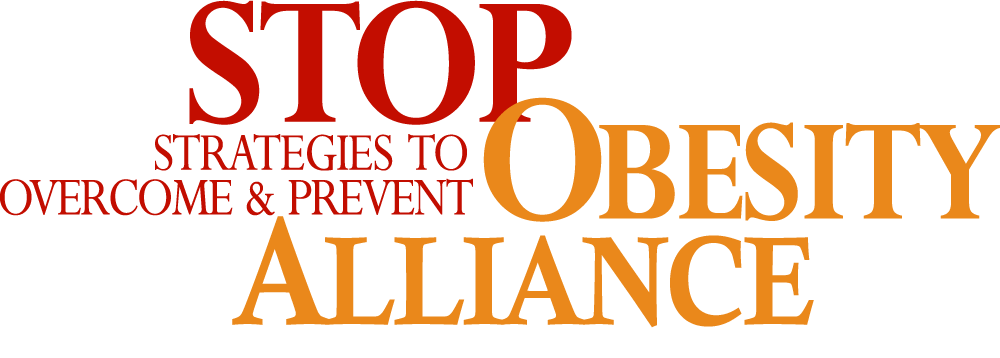Fast Facts – Obesity and AI/AN Populations
American Indian/Alaska Natives face one of the highest rates of obesity and increased obesity-related mortality compared to other races.

Obesity is associated with significantly increased risk of more than 20 chronic diseases and health conditions that cause devastating consequences and increased mortality. Beyond the significant personal toll of obesity, related health complications are driving up health care costs and threatening employers' bottom lines.
Obesity is a complex chronic disease in which abnormal or excessive accumulation of body fat impairs health. Adult and adolescent obesity rates have more than doubled since the 1980s — in the U.S. today, obesity affects over 42% of adults and 20% of 12-19 year olds. Obesity and its related complications are major drivers of rising healthcare costs, diminished health-related quality of life, and the recent decline in U.S. life expectancy.
These downloadable STOP Fast Fact sheets are designed to provide basic information about the science of obesity and current strategies to address it.
"What chronic diseases are associated with obesity? Diabetes, heart disease, stroke, cancer, osteoarthritis..."

Fast Facts – Obesity and AI/AN Populations
American Indian/Alaska Natives face one of the highest rates of obesity and increased obesity-related mortality compared to other races.
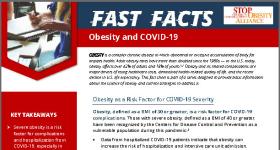
Fast Facts – Obesity and COVID-19
Obesity is a risk factor for COVID-19 complications. Those with severe obesity have been recognized by the CDC as a vulnerable population [more]...
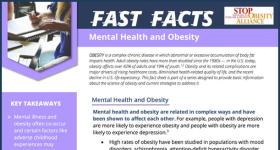
Fast Facts – Mental Health and Obesity
Mental health and obesity are related in complex ways, and have been shown to affect each other reciprocally.

Fast Facts – Adolescent Obesity
The Prevalence of Adolescent Obesity The U.S. obesity rate among adolescents aged 12 to 19 years old has risen to 20%, compared to 11% in 1988-1994.2 Disparities exist based on race and geographic location.

Fast Facts – Obesity and Cancer
The chronic and life-threatening diseases of obesity and cancer have a complex relationship. Individuals with obesity are more likely to develop specific types of cancer. Every year about 5% of new cancer cases in men and 10% in women are attributable to excess body weight.
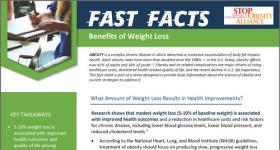
Fast Facts – Benefits of Weight Loss
Weight loss can be beneficial, not only for an individual’s health, but also for their financial wellbeing. Those who lose weight could save hundreds or thousands of dollars, depending on their BMI.

Fast Facts – Racial Disparities and Obesity
COVID-19 has pulled back the curtain on racial disparities in health care. Some communities of color are experiencing higher rates of hospitalization or death from COVID-19. These disparities are not limited to infectious diseases; racial minorities experience higher rates of chronic diseases, death, and disability compared with white Americans.
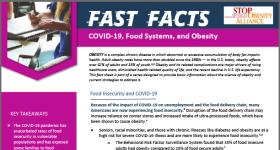
Fast Facts – COVID-19, Food Systems, and Obesity
Because of the impact of COVID-19 on unemployment and the food delivery chain, many Americans are now experiencing food insecurity. Disruption of the food delivery chain may increase reliance on corner stores and increased intake of ultra-processed foods, which have been shown to cause obesity...

Fast Facts – Obesity in the Workplace
The average American will spend 1/3 of their life in the workplace. Obesity causes multiple chronic diseases, including cardiovascular disease, type 2 diabetes, and some cancers, as well as employee burnout and loss of productivity. The indirect costs of absenteeism and presenteeism associated with overweight and obesity among American workers may amount to more than $900 billion ($6,000 per employee).
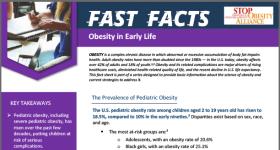
Fast Facts – Obesity in Early Life
The U.S. pediatric obesity rate among children aged 2 to 19 years old has risen to 18.5%, compared to 10% in the early nineties. Disparities exist based on sex, race, and age.
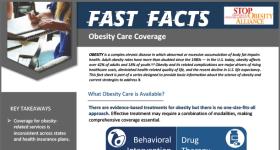
Fast Facts – Obesity Care Coverage
There are evidence-based treatments for obesity but there is no one-size-fits-all approach. Effective treatment may require a combination of modalities, making comprehensive coverage essential.
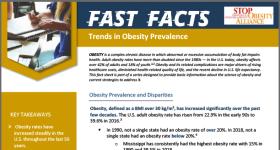
Fast Facts – Trends in Obesity Prevalence
Obesity, defined as a BMI over 30 kg/m2, has increased significantly over the past few decades. The U.S. adult obesity rate has risen from 22.9% in the early 90s to 39.6% in 2016.
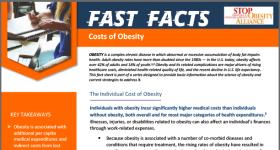
Individuals with obesity incur significantly higher medical costs than individuals without obesity, both overall and for most major categories of health expenditures. Illnesses, injuries, or disabilities related to obesity can also affect an individual’s finances through work-related expenses.
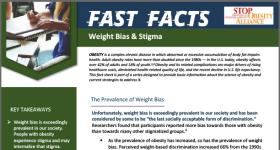
Fast Fact – Weight Bias and Stigma
Unfortunately, weight bias is exceedingly prevalent in our society and has been considered by some to be “the last socially acceptable form of discrimination.” Researchers found that participants reported more bias towards those with obesity than towards many other stigmatized groups.
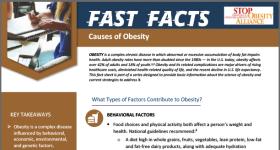
Fast Facts – Causes of Obesity
What Types of Factors Contribute to Obesity? Obesity is a complex disease influenced by behavioral, economic, environmental, and genetic factors.
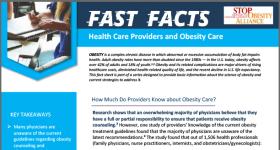
Fast Facts – Health Care Providers and Obesity Care
Research shows that an overwhelming majority of physicians believe that they have a full or partial responsibility to ensure that patients receive obesity counseling.3 However, one study of providers’ knowledge of the current obesity treatment guidelines found that the majority of physicians are unaware of the latest recommendations.
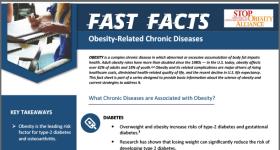
Fast Facts – Obesity-Related Chronic Disease
What Chronic Diseases are Associated with Obesity? Diabetes, heart disease, cancer.
